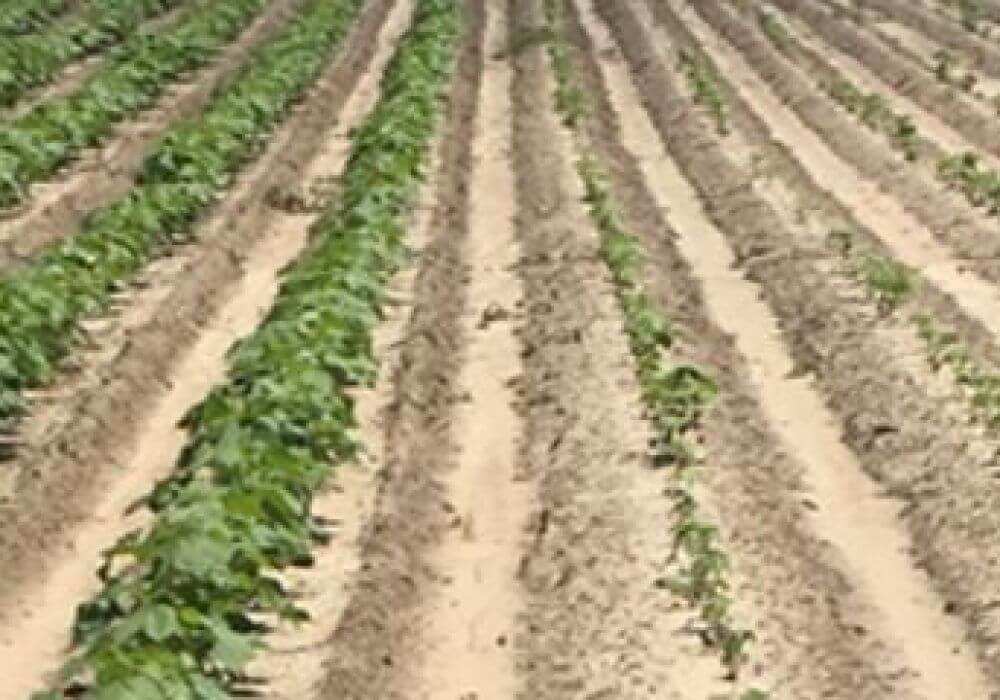
Aldicarb treated vs. base seed treatment
Sold on AgLogic™ Aldicarb
After five years of absence from the market, aldicarb debuted with consistent, and sometimes stunning, results in the 2017 growing season. Aldicarb, formerly marketed under the brand name Temik®, was once again available under the brand name AgLogic™ 15GG aldicarb pesticide.
The aldicarb active ingredient was the same. The granular formulation was the same. The performance was the same. The name was different.
For Zack Thaggard, Leesburg, GA grower, the name didn’t make any difference – especially when he was reminded what AgLogic™ could do for thrips and nematode control to kick his cotton crop off to an early, vigorous start.
“I had used Temik in the past,” he says. “We always knew it worked, but I guess we didn’t pay that much attention to it. Then we lost it and went on to other things never thinking it would come back.”
When AgLogic™ aldicarb hit the market in time for the 2017 planting season, Thaggard and his consultant Jay Holder with Holder Consulting, decided to test the product unlike they had ever tested it in the past. Instead of a few rows of treated vs. untreated, Thaggard used his 11,000 acres of cotton as a large scale test plot.
“We applied AgLogic™ aldicarb at a rate of 5 lbs. per acre on about half of the 11,000 acres of cotton,” he said. “We applied it in multiple fields across multiple locations. For the most part we worked around pivot centers. We treated half of the field at the pivot center with AgLogic™ aldicarb and left the other half untreated.”
Soon after emergence, the difference was stunning, according to both Thaggard and Holder and anyone driving State Route 32 near Leesburg, GA.
“Growers used to stop and ask us if the cotton was planted at different times or if it was a different variety on one side,” Holder says. “It wasn’t. It was all planted at the same time. It was the same variety. It had the same base seed treatment. The only difference was half of the pivot had AgLogic™ aldicarb on it. The other half did not.”
In other fields throughout his operation, Thaggard basically used the same protocol – half treated with AgLogic™ aldicarb, half without. He saw the same or similar results on six different varieties.
Holder credits the striking difference primarily to early season thrips control, as well as nematode control. “We had a really tough year with thrips in 2017,” he says. “But it’s tough every year. Because AgLogic™ allows you to have early season thrips control, growers can now better time their first post herbicide spray by not having to make a foliar insecticide spray.”
The faster, more vigorous growth in the AgLogic™ treated cotton was evident most of the season, according to Thaggard. “It just popped out of the ground and took off,” he says. “It was basically three weeks ahead of the non-treated cotton for most of the season. The non-treated started to catch up, but it’s hard to catch up to that early growth factor.”
Holder agrees. “Even when both sides started to look about the same later in the season, the untreated cotton had smaller squares and smaller bolls,” he says.
Compared to seed treatments, both Thaggard and Holder agree that AgLogic™ aldicarb is a more desirable option for thrips and nematode control during the early season.
“We’ve treated seed for years and spent a pile of money on seed treatments and sometimes they’re decent,” Thaggard says. Most of the time you can’t really tell much of a difference. Even though AgLogic™ is more expensive, I think it’s worth leaving off the seed treatment and investing that money in aldicarb. It gives you better thrips control with the added bonus of better nematode control.”
Nematodes are a significant problem on most of the fields Thaggard farms. “Root-knot is the biggest problem,” he says. “We’ve got reniform. We’ve got pretty much every kind of nematode there is. A big part of the issue is the inconsistency in soil types.”
Thaggard’s farming operation is widespread and diverse even if you just consider the cotton portion of it. With multiple locations, there is very little consistency in soil types, agronomic factors and even weather. Soil types are particularly challenging.
“We’ve got a bunch of different soil types,” he says. “One farm might be red clay and the next one might be sand, and the next one might be kind of a gray, almost Delta-like looking soil. We’ve got a lot of variants with the soil types.”
Even variation resides within individual fields. “We’ve got some sporadic clay spots even if we’re in a predominantly sandy field,” Thaggard says. “It varies considerably. There’s often not even one soil type from one end of the row to the other end.”
At harvest, across the 11,000 acres of cotton, the portion treated with AgLogic™ yielded approximately 150 lbs. of lint more per acre than the untreated cotton. As it turned out, another benefit of the AgLogic™ treated cotton showed up late in the 2017 season. “In the AgLogic™ treated cotton there was definitely a difference in earliness,” Thaggard says. “When Hurricane Irma barreled through here, that hurricane hammered the right side of the field because it was 2-3 weeks behind.”
Thaggard used the product again in 2018 – this time foregoing his large-scale test plot of split circles. Even though Hurricane Michael was extraordinarily devastating to much of the Southeast in 2018, Thaggard is still enthusiastic about AgLogic™ aldicarb, crop vigor and early season pest control.
Asked if he would use it again, Thaggard replied, “I want to use it on every acre if I can. It’s a good product. We need to keep it.”